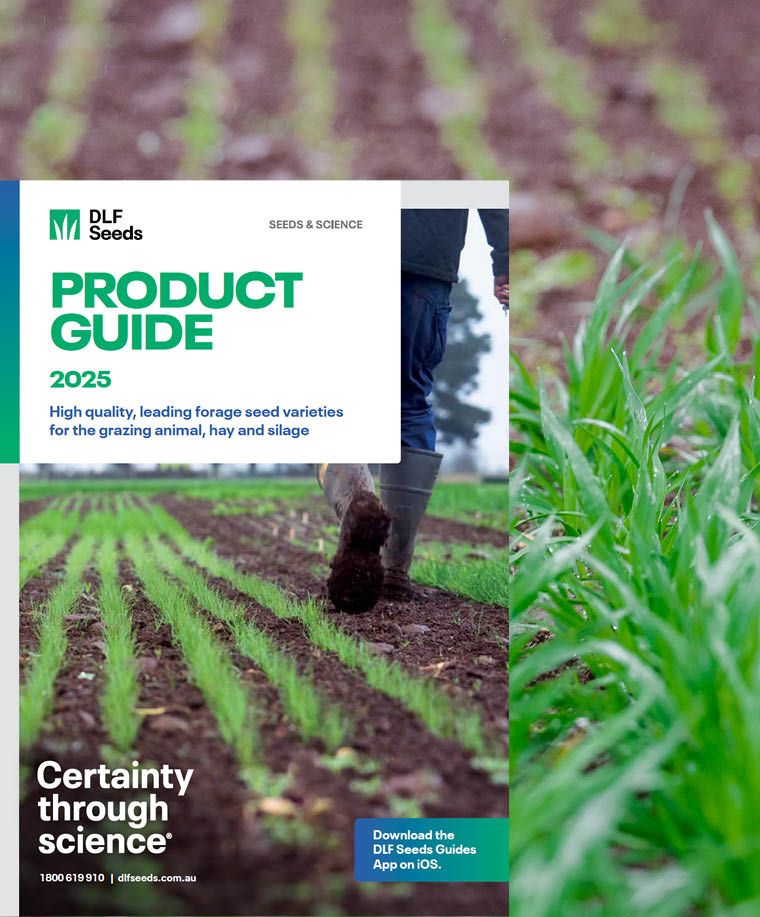Get in Touch
Contact Us
National team

Find Your Local Sales Agronomist
Temora winter active tall fescue is a summer dormant, deep rooted perennial that offers improved persistence for Australian producers. Temora has been bred for greater tiller density, leading to increased yield at critical times such as autumn and winter. Ideally suited for low to medium rainfall areas with heavier soil types, Temora is a great option for filling the feed gap soon after the opening rains.
Pasture seed sowing rate (sole): 4-20kg/ha
Pasture seed sowing rate (mixed): 4-10kg/ha
The breeding of Temora has been achieved through the crossing of elite Flecha and Resolute plants without the inclusion of endophyte. It was important to capture the key attributes of Flecha and Resolute because they both have traits that gave them a key advantage in the Australian market. The selection criteria that was used to identify potential lines included:
Sowing of Temora is very important to get right so that the investment made in a long term perennial has an excellent return on investment (ROI). There are some key considerations to ensure that the end result is an excellent one.
Tall fescue as a species is sensitive to sowing depth and if sown too deep, will either take a longer time to germinate or not germinate at all. It is also important not to cut corners by broadcasting tall fescue seed as this will give a varying germination.
Temora is a small seeded temperate species and like many other similar species, pasture seed sowing depth and seed to soil contact all need to be set up correctly. The use of either a roller after sowing or a well set up press wheel system is recommended.
Sowing depth should be between 5-10mm to allow for some soil coverage and the seedling to break the soil surface as quickly as possible. Soil temperature can also have an impact on the success at establishment, so aim for warm soils with a temperature of at least 14 degrees or higher. This is essential to achieve a quick germination and as much growth prior to the soil and air temperature declining which will reduce the growth rate of the seedling.
Weeds can be a challenge when trying to establish tall fescue and it is critical to implement a weed control programme. This will help to reduce competition to allow the tall fescue to have full use of nutrients and moisture in the first year.
A cropping programme for 1-3 years prior to sowing Temora as a perennial pasture will help reduce weed seed populations. During the cropping phase, note down what weeds are present so that knowledge of any potential weeds that may be present soon after sowing will help with control measures that may be needed.
Soil testing prior to sowing is critical so that nutrient levels and any soil conditioning requirements can be implemented as quickly as possible. Sowing with a sound starter fertiliser which has phosphorus and Nitrogen is ideal. Based on the soil test there may be a requirement to apply other nutrients, but it is recommended to seek the advice of your local retail Agronomist for the right fertiliser.
For pasture seed sowing rates specific to your farming needs, contact your local DLF Seeds Sales Agronomist here
In the year of establishment, grazing management needs special attention so that it is done to set the young plants up, but without causing any detrimental damage. Delay grazing in the first year if the ground is soft and or wet as damage has the potential to cause long term set-backs. If the Temora is able to withstand pulling, utilise the lightest stock class available; calves and or sheep so that the weight on the plant is as light as possible.
Grazing time should be kept to a minimum. A light “nip” is all that is needed so as to put the plants in a phase of increasing growth of the roots and also increasing the development of more tillers.
Grazing management when done correctly will ensure Temora returns excellent growth rates of meat (beef and or sheep) as well as milk if utilised in a dairy situation. Correct grazing management of Temora will also allow legumes to be a part of the pasture composition which will keep the quality of the total feed high.
When managing Temora, be sure to utilise good stock numbers and be prepared to adjust stocking rates based on the growth rate of the Temora or the time of year – autumn to winter and into spring. As the soil temperatures and daylight hours extend, the growth rate of Temora will increase and therefore, the grazing management needs to be adjusted. This will keep the node of the tillers low in the crown and keep the plant in a vegetative growth phase for longer.
If Temora does start to show signs of elongating and stock start to selectively graze, then it would be advisable to either significantly increase the stocking rate, use cattle if available or use the paddock as a hay or silage crop (but not in the first year). Doing any of these options will utilise the feed that has been produced and prepares the paddock well for the summer months as well as ensures ongoing persistence.
Minimum 400mm rainfall per annum unless irrigated
